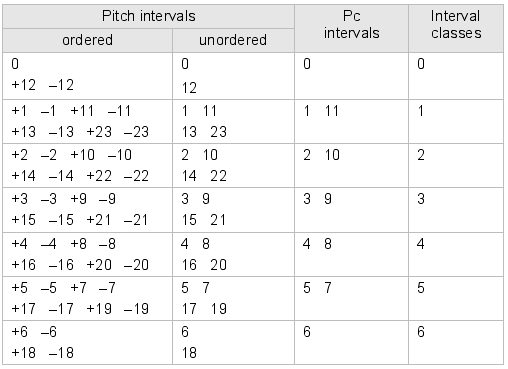|
|
||||
| Exercise 2-2. Pitch intervals and interval classes | ||||
The many different pitch intervals we hear in pieces of music represent a smaller number of pitch-class intervals. Both, in turn, can be grouped into a limited number of interval types or interval classes (ics). Below is a table of the most common pitch intervals --those within a two-octave span, ordered and unordered -- and their abstraction into pc intervals and interval classes. All are named using integers representing semitone counts.

When we come to discuss the general properties of pitch-class sets, we shall note that these properties mostly stem from their inventory of interval classes -- classes that can be embodied in numerous ways in the pitch intervals of actual pieces of music.
Below and on the following page are two musical examples. Name, in your mind,
- the ordered pitch interval (using + and - for direction) between each pair of adjacent pitches
- the class (ic) to which this interval belongs
Click on the blanks in the two columns to reveal the correct answers. Pressing your browser's Refresh button will remove the answers.
(By the way, you should notice, in both of these examples, that the composers
have arranged the successions of pitch intervals -- and consequently of
interval classes -- carefully. Can you find the patterns?)
a. Alban Berg, Lyric Suite, first movement, mm. 2-4, violin 1
 |
|||||||||||||||||||||||||
| Page last modified 12 July 2001 / GRT |
|
|||